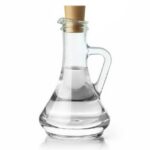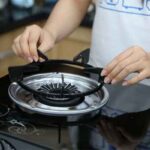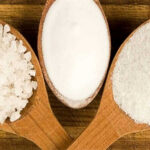How to Clean Your Kettle with Vinegar
This method uses common household ingredients such as white vinegar, dish soap, baking soda, and a brush or sponge to effectively clean your kettle.
Mix water and vinegar in a 1:1 ratio and pour it into your kettle until it reaches halfway. Plug in the kettle and boil as usual. If your kettle doesn’t have an automatic shut-off feature, unplug it once the water boils. Let the solution sit for 20 minutes to allow the vinegar to soften any built-up mineral deposits, making them easier to clean.
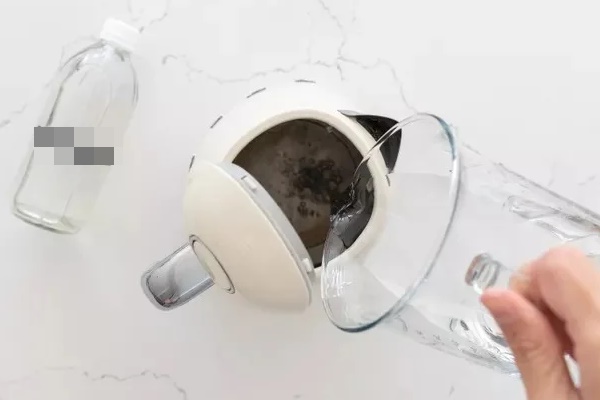
After 20 minutes, pour out the vinegar solution and use a brush or sponge to scrub away any remaining dirt, especially around the spout where mineral deposits tend to accumulate. For tough stains, dip your brush or sponge into undiluted vinegar to help loosen and remove the buildup.
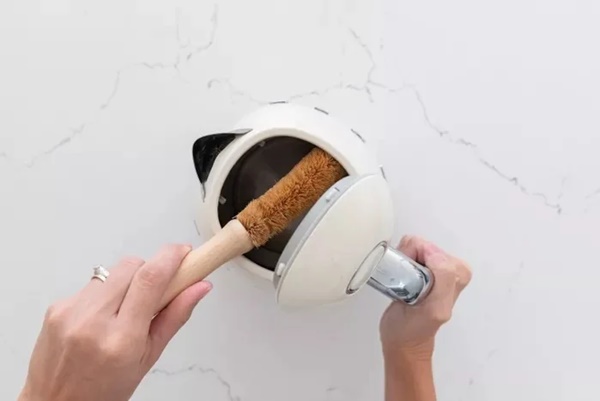
Use a sponge or cloth to wipe down the exterior of the kettle and the base (after unplugging it from the power source). Dip the sponge or cloth into warm water mixed with a few drops of dish soap to remove any stains or stubborn buildup on the exterior.
For tough stains, you can also dip the sponge or cloth into dry baking soda, which has mild abrasive properties to help scrub away dirt. Once your kettle is clean, dry it with a cloth.
After cleaning, fill your kettle with fresh water and boil it again to rinse away any residual vinegar or cleaning agents.
Finally, rinse your kettle with clean water to ensure that all traces of cleaning agents and minerals are removed.
How to Clean Your Kettle with Lemon
Similar to vinegar, lemon is acidic and can help loosen and remove stains from your kettle. Cut a few fresh lemons into thin slices and place them in the kettle. Fill the kettle with water and boil it. Let it sit for about 20 minutes, then proceed to scrub the kettle as instructed above.
How to Clean Your Kettle with Eggshells
When cooking, save and thoroughly clean some eggshells, then crush them into small pieces. Place the eggshells into your kettle and fill it halfway with water. Use a pair of chopsticks to stir the mixture, then boil the water. Let it sit for 20-30 minutes, then pour out the eggshells and use a brush or sponge to scrub the interior and exterior of the kettle. Rinse the kettle with clean water.
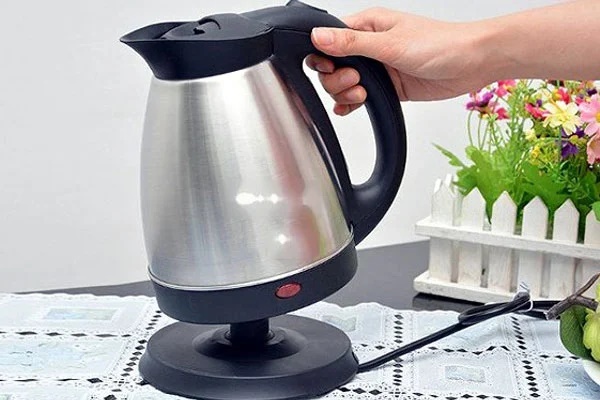
How to Clean Your Kettle with Coca-Cola
Pour a can of Coca-Cola into your kettle and let it soak for at least an hour. Then, pour out the Coca-Cola and use a sponge or cloth to wipe away any residue and buildup inside the kettle.
For a quicker method, pour Coca-Cola into the kettle and boil it. Use a wooden spoon to stir the bottom of the kettle for a few minutes to help loosen any buildup. Then, rinse the kettle with clean water.
To maintain the cleanliness of your kettle, always empty it after use and avoid leaving water sitting in it for extended periods. Using filtered water instead of tap water can also reduce the buildup of mineral deposits.
Store your kettle in a cool, dry, and well-ventilated place. Unplug the kettle when not in use, and always be careful to avoid getting water on the electrical base when cleaning to prevent any electrical hazards.
Source: Khoevadep
The Ultimate Guide to DIY Dish Soap: 4 Effective and Safe Formulas to Remove Stubborn Stains
A savvy homemaker can easily concoct a cost-effective, efficient, and skin-friendly dishwashing liquid. With a few simple, accessible ingredients, one can whip up a potent cleaner that rivals any store-bought brand. This DIY approach ensures a safe, effective, and economical solution for your dishwashing needs.
The Ultimate Guide to Cleaning Snakehead Fish: Remove the Slime, Avoid the Fishy Smell
The snakehead fish is a slippery customer, both literally and figuratively. Its slimy exterior can be off-putting to those unfamiliar with its preparation, and its strong, lingering fishy odor can be a challenge to remove. But fear not, as we are here to reveal the secrets to quickly and effectively cleaning this fish, ensuring it is free of slime and any unpleasant odors when cooked. With our expert tips, you’ll be able to transform this tricky fish into a delicious and odor-free meal.

























